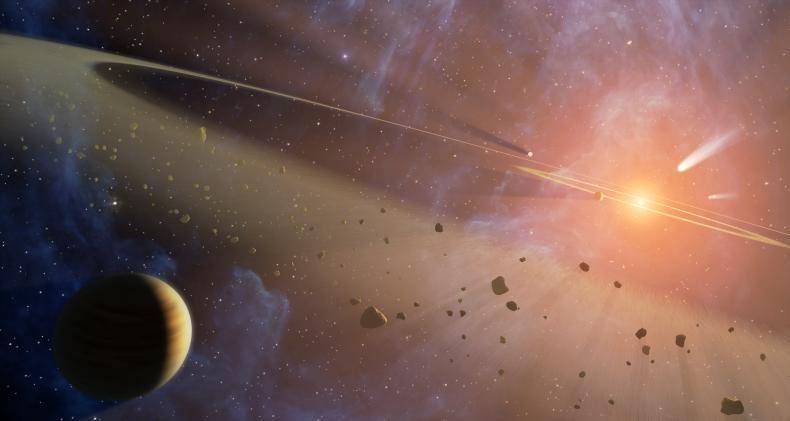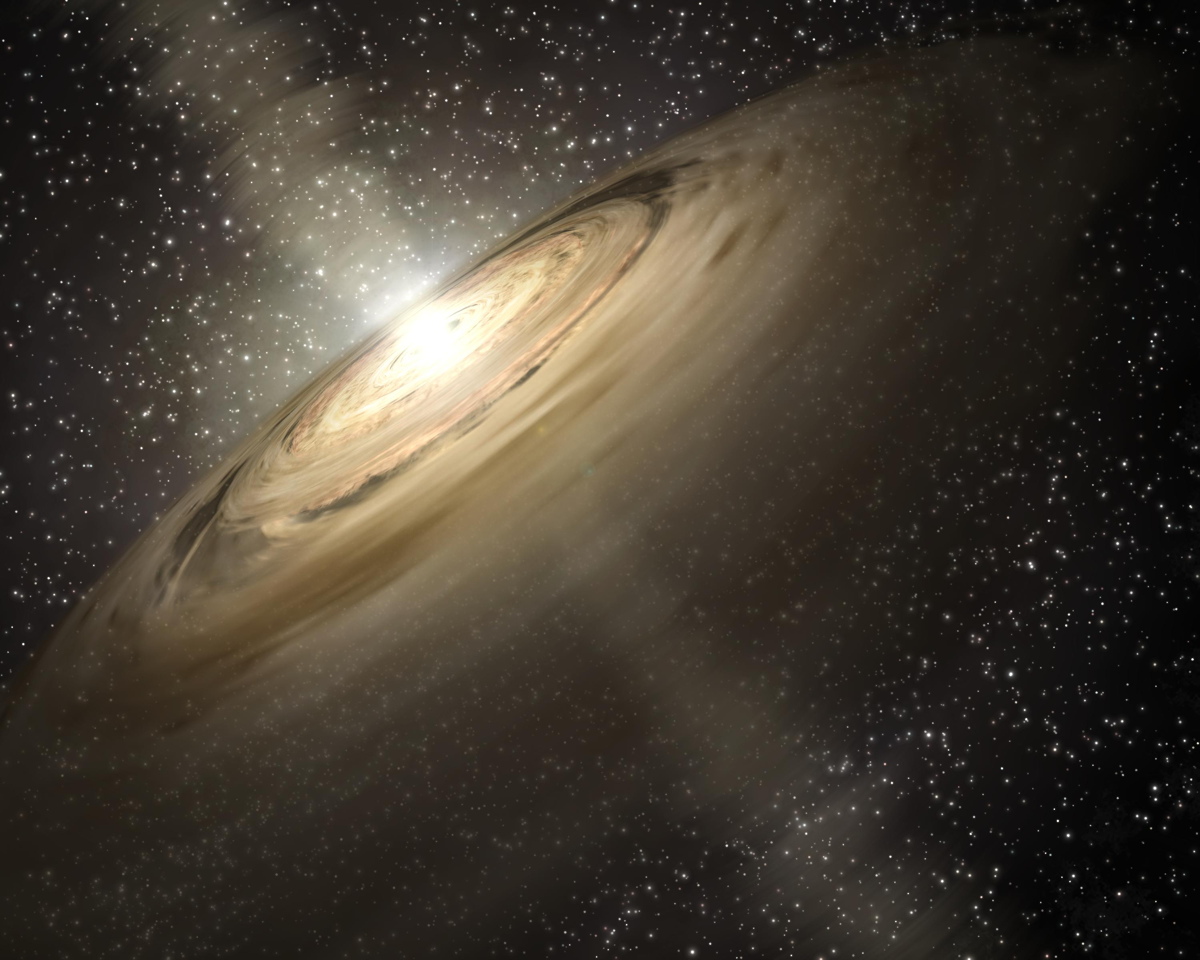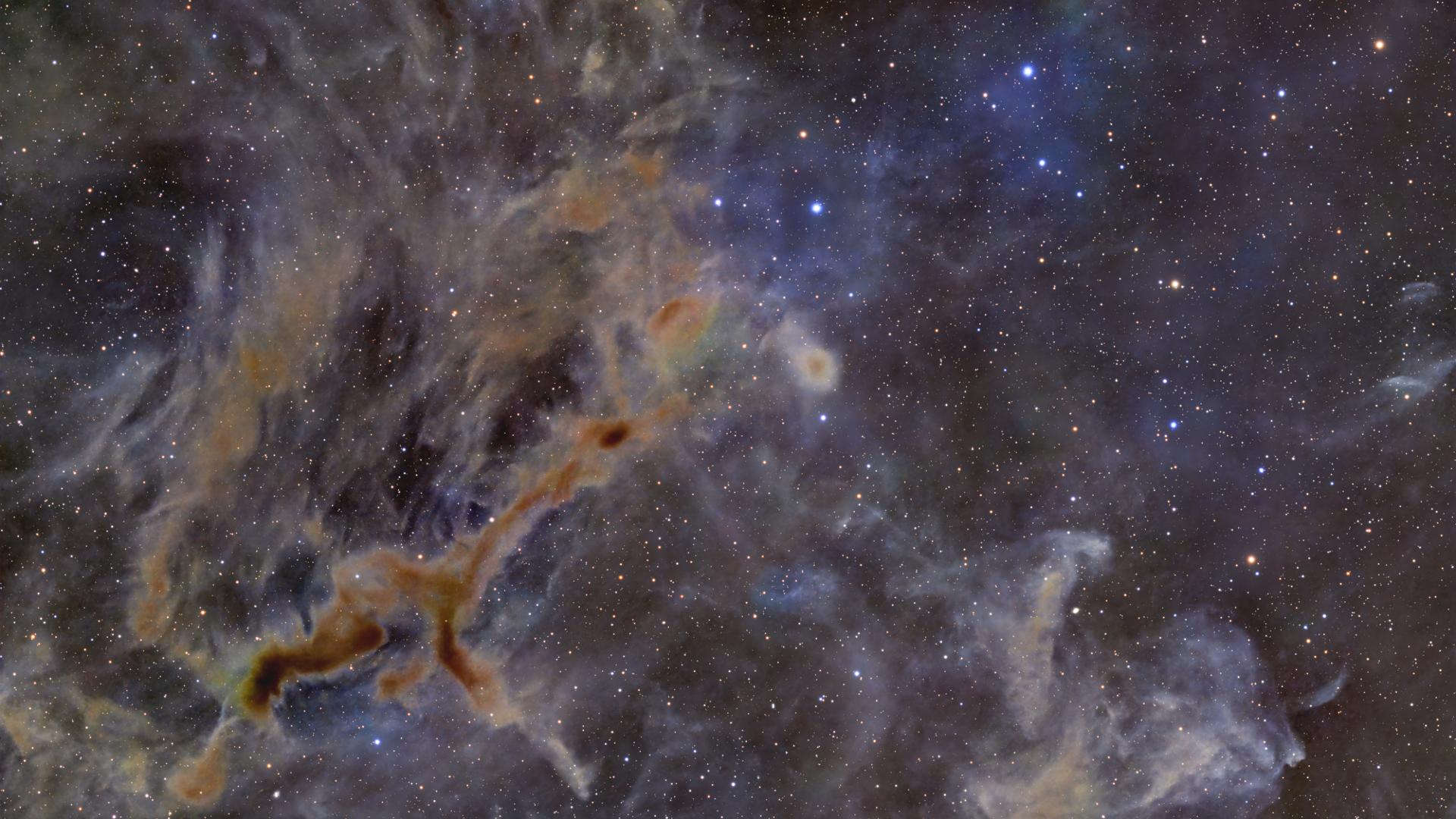To Build a Gas Giant Planet, Just Add Pebbles

Gas-giant planets such as Jupiter and Saturn form quickly by scooping up pebble-size building blocks and pushing smaller potential planets out of the way, new research suggests.
Stars are born from slowly rotating clouds of gas that collapse inward; protostars spin faster and faster at the heart of a disk made of gas and dust. Over time, the dust grains clump together to form pebbles, asteroid-size planetesimals and eventually whole planets, clearing out paths through the dust and debris. But the details of that planet-forming process are still up for debate.
A new simulation answers important questions about how the fast-acting pebble-accretion model of gas-giant formation works, letting just a few planets reign supreme and banishing smaller planets and asteroids to the outskirts, as in our solar system. [Video: Best-Ever View of Exoplanet Birth]
"This is the first model that we know about that you start out with a pretty simple structure for the solar nebula from which planets form, and end up with the giant-planet system that we see," study lead author Harold Levison, an astronomer at the Southwest Research Institute (SwRI) in Colorado, told Space.com.
Pebble power
Earlier theories of planet formation relied on a slow buildup from dust to pebble-size debris to mountain- or asteroid-size planetesimals, until these burgeoning cores grew large enough to grab hydrogen and helium gas nearby and form gas giants like those orbiting the sun. But observational evidence suggested that the planets formed quickly, before the gas surrounding the newborn sun dissipated — and the chances of the giant planetesimals crashing into one another and combining were too low to form massive planets quickly enough.
In 2012, researchers Michiel Lambrechts and Anders Johansen from Lund University in Sweden proposed a model whereby tiny pebbles, formed from dust grains that fused together in collisions, hold the key to making gas giants quickly — up to 1000 times faster than the earlier model.
"They showed that the leftover pebbles from this formation process, which previously were thought to be unimportant, could actually be a huge solution to the planet-forming problem," Levison said.
Breaking space news, the latest updates on rocket launches, skywatching events and more!
And now, Levison's group has modeled more precisely how to get from this mechanism to the types of systems we see out in the universe.
To understand how pebbles make the process go faster, skip forward in time from the formation of a star.
The young star is encircled by a disk of gas, dust and pebbles, with occasional larger chunks of matter that have clumped together over time. Those chunks collapse under their own gravity into planetesimals and planatary embryos, bodies that are big enough to have their own, independent orbits, but the little pebbles are still slowed down by the gas in their orbits and are more easily disturbed.
If two large objects approach each other in their orbits, they might just pass on by. But if a pebble approaches a larger body, it will be slowed enough by the surrounding gas to be pulled in by the larger object's gravity, and spiral down to add its mass to the clump. Larger clumps and planetesimals can attract pebbles from 100 to 1,000 times their radius away, sucking them in and growing larger and larger.
And that's where the new simulation comes in. In the earliest pebble-accretion model, around 100 planetesimals wind up acquiring an equal share of pebbles to each become about 10 percent of the size of Earth, with none growing large enough to form the core of a gas giant. But in the new model, they don't play nice; the larger objects knock the smaller ones out of the way.
"The larger objects now tend to scatter the smaller ones more than the smaller ones scatter them back, so the smaller ones end up getting scattered out of the pebble disk," study co-author Katherine Kretke, also from SwRI, told Space.com. "The bigger guy basically bullies the smaller one so they can eat all the pebbles themselves, and they can continue to grow up to form the cores of the giant planets." [Quiz: How Well Do You Know Our Solar System?]
The team found that, taking those interactions into account, the problem of too many small planetesimals dissolves. The pebble-accretion process forms planets quickly, and the system begins to look very familiar.
"We're able to take these initial conditions of 'fairly simple, with some planetesimals and pebbles,' and grow to something which has a couple of giant planets, some icy bodies outside, to be Uranus and Neptune, and beyond that an undisturbed Kuiper Belt," Kretke said. "So, pretty much our solar system."
Up to speed
The pebble-based model of gas-giant formation caught on quickly, according to Levison, as well as Johansen, a co-author of the first paper proposing the model.
Johansen has a guess as to why: "Sometimes, you get an idea that makes things work better by a factor of 2 or 5 or something," he told Space.com. "One can show very easily with pebble accretion that it can accelerate planet formation by a factor of 1,000 — it's very hard to get around that. You have to take that very seriously."
Research like Levison's is helping flesh out the theory, using advanced computer simulations to find out the properties of systems formed with a pebble-accretion process. (Running one full simulation of a solar system's formation took around two weeks.) With that data, Johansen said, researchers can compare those properties to the ones we know about in planets in other star systems to see how well they match up.
"Some stories of planet formation are 'avoidable' — that is, there are alternative stories — but the pebble-accretion story is in some form or other likely to be important," David Stevenson, a planetary scientist at the California Institute of Technology in Pasadena, who was uninvolved in the study, told Space.com via email. "This paper shows hope of overcoming some of the previously identified difficulties."
As more researchers model and examine different aspects of a pebble-accretion model, they'll be able to paint a more detailed picture of the process and what it means for our solar system and the others we find throughout the galaxy.
"It's a whole new way of looking at planet formation, and people are still working out exactly what it means," said John Chambers, a planetary scientist at the Carnegie Institution of Washington. Chambers is also not involved with the new modeling study, but he has been studying what the pebble-accretion process would mean for the solar system's overall shape.
"But it's certainly shaking things up," he told Space.com.
The new work was detailed online today (Aug. 19) in the journal Nature.
Email Sarah Lewin at slewin@space.com or follow her @SarahExplains. Follow us @Spacedotcom, Facebook and Google+. Original article on Space.com.

Sarah Lewin started writing for Space.com in June of 2015 as a Staff Writer and became Associate Editor in 2019 . Her work has been featured by Scientific American, IEEE Spectrum, Quanta Magazine, Wired, The Scientist, Science Friday and WGBH's Inside NOVA. Sarah has an MA from NYU's Science, Health and Environmental Reporting Program and an AB in mathematics from Brown University. When not writing, reading or thinking about space, Sarah enjoys musical theatre and mathematical papercraft. She is currently Assistant News Editor at Scientific American. You can follow her on Twitter @SarahExplains.

